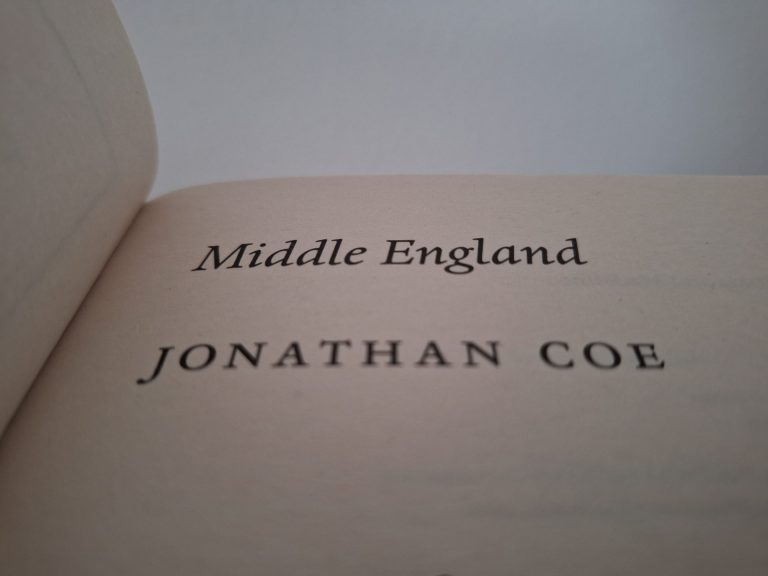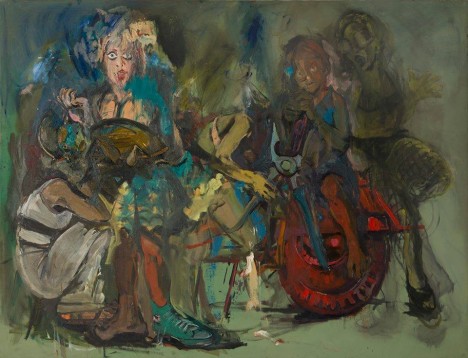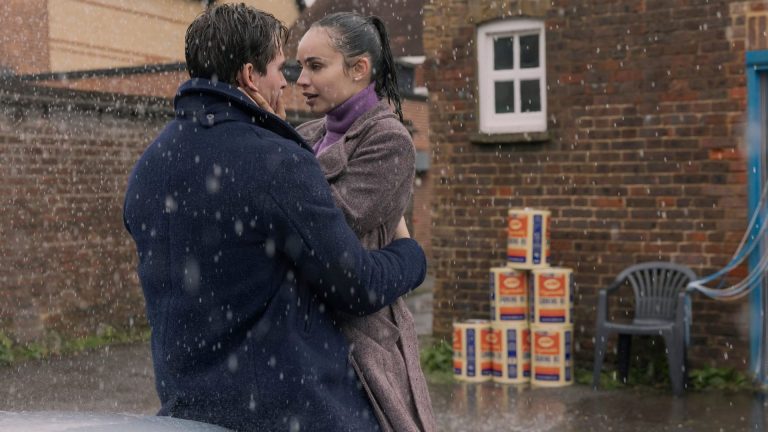Jonathan Coe is a novelist and writer. He graduated from Trinity College, Cambridge, and completed an MA and PhD at the University of Warwick. His novels, most of them comic or political, include What a Carve Up! (1994), a sprawling satire of Thatcherism; The Rotters’ Club (2001), an award-winning account of growing up in 1970s Birmingham; Middle England (2018), described as “the first great Brexit novel”; and, most recently, The Proof of My Innocence (2024), a mashup of mystery and autofiction and dark academia set during the premiership of Liz Truss. Cherwell spoke to him about novel-writing, neoliberalism, and Henry Fielding.
Cherwell: You’ve written sixteen novels, I want to say?
Coe: Yes if you count The Broken Mirror, the children’s book. The handy thing to remember is that Number 11 is the eleventh.
Cherwell: Do you have a favourite book you’ve written?
Coe: I like things about all of them and dislike things about all of them. I have a soft spot for The Accidental Woman, because it’s my first one and it’s so different from all the others. When I listened to it once as an Audiobook, it felt like it was written by someone else. It’s part of my twenty-four-year-old self, and that seems a long time ago.
Cherwell: Who would you say is your biggest literary influence?
Coe: [long pause] There are so many in a way and they influence you in different ways, but to go to the fountainhead I’d say Henry Fielding. I discovered him by accident when I was doing my A-levels. We had a slightly incompetent English teacher and he gave us Joseph Andrews to read over the holidays even though we were actually meant to be studying Jane Austen. Everyone else came back furious that they’d wasted their time reading this book that they all hated, but I absolutely fell in love with it, and I bless my teacher’s incompetence every day. It took me straight to Tom Jones. I was obsessed with Fielding in my twenties and did my PhD on him at Warwick. There’s a kind of mixture of the innovative and the accessible in Fielding that I’ve always aspired to. He was making the novel up as he went along, to do that and to carry the reader along on a really involving narrative journey is quite an achievement.
The more I read about Fielding, the more I think that the narrative persona he adopts in Tom Jones is just as fictional as everything else. He was really just grumpy. If you want to know the real Fielding, you should read his last book, Journal of a Voyage to Lisbon. The prose is convoluted, and he’s very ill and angry, but it gets closer to him as a person. I actually dramatised it and it’s one of the big disappointments of my career that it only got one production.
Cherwell: I can definitely see the Fielding influence in your novels, the high spirits, and the willingness to make fun of things, especially hypocrisy. But your work is similar to that of other comic novelists too, like PG Wodehouse.
Coe: I have mixed feelings on Wodehouse. I call him the Mozart of comic writers but you have to be in the mood. I was meant to do a podcast on PG Wodehouse and I agreed to do it. It was just after Trump had been elected and the world seemed very grim, I picked up Wodehouse and started reading and it just got on my nerves a bit.
Cherwell: Which contemporary writer do you find yourself most in sympathy with?
Coe: I love Ishiguro, especially The Remains of the Day which is actually a great comic novel. I like Ian McEwan, too, a less funny writer but he has his moments. I’m endlessly waiting to be blown away by a contemporary writer but it never happens.
Cherwell: Your novels are more explicitly political than most, more explicitly tied in to current affairs and politics. For example, The Proof of My Innocence is a satire on Trussonomics. Where do you see the role of the novelist in political discourse?
Coe: My family interestingly would be amazed that I’ve turned out as a novelist with this kind of reputation. As a kid I had my head in the clouds, watched movies and never watched the news, and probably didn’t even know who the prime minister was. I was like that until 1979 when Mrs Thatcher got into power.
Cherwell: You say “Mrs” Thatcher, I notice, that’s usually what her admirers say! But I know you’re not an admirer.
Coe: My opinions about her are starting to change. Compared to the generation that followed her, the Conservative politicians we have now, she seems a towering figure. One reason I wrote The Proof of My Innocence was to talk about what’s happened to the Conservative movement in the last forty years. It’s taken a very dark and shameful turn. In hindsight, you can see that everything Mrs Thatcher did had consequences, that everything would turn out as badly as it has, but I think she would be horrified to see what the long-term effects of some of her policies have been. She would have vigorously opposed Brexit, I suspect.
But I don’t think novelists have a duty or responsibility to write about these things. We write about whatever interests us and happens to fire our imaginations. I’m not active politically, I’m not a party member but there are other writers who are much more politically involved than I am who don’t write about it at all. I think I’m just interested in the choices people make and how the choices we make are inseparable from the context we make them in, and how part of that context is political. I think there’s been a big cultural shift in Britain in my lifetime, between the post-war consensus which lasted until 1979, and everything that has come since – I grew up in the first of those eras, and that was what nurtured me. I think we’ve thrown the baby out with the bathwater big time by embracing neoliberalism.
Cherwell: That definitely comes through in your books, this vision of the post-war years. In most novelists you get a sense of an ideal, which you can infer from their body of work, and the ideal I get from your books is sort of – the 1950s but without the prejudices.
Coe: Well this is the thing, it was a great time to be a white heterosexual guy but not a great time if you belonged to any other minority, including just being a woman. I have a strong nostalgia for it in some ways and an equally strong sense that we can’t and shouldn’t go back to it. Part of the situation at the moment, that so many people are turning to the far-right and voting for populists, is that they’re so angry about things, and yet materially nearly everyone is better off than they would have been in the ‘50s and ‘60s.
Cherwell: I suppose the difference is that, then, things were getting better, whereas, now, things are getting worse. Real living standards have barely risen since 1975, whereas if you look at the changes in living standards between say 1910 and 1975, they were enormous.
Coe: If that’s true, it means the resentment has been festering for a long time. I think we’re at a number of other watersheds as well. So many people lost faith in the Labour Party when we went into Iraq in 2003 and the economy hasn’t recovered from the crash in 2008. We haven’t really had an honest conversation about it. It’s going to happen again sooner or later. Most people I listen to say it’s just a matter of time before another crash.
Cherwell: What do you see as the alternative?
Coe: It would be great if we could take the baby back and leave the bathwater out, but I don’t know if that’s possible. I don’t think the problem is with the government, it’s successive governments. Everything is viewed in terms of the profit motive and how much money something can make, and that’s been the case since the 1980s. It’s not only not enough, it’s not even most people’s values. Endless growth is not the answer to everything, especially not with the radically unequal distribution of wealth. It’s an absurdity, really, when you think of just how much money someone like Elon Musk has. I think when people say every billionaire is a symptom of social failure, that’s how we should look at it.
I know some people say my politics aren’t as radical as when I wrote What a Carve Up! in 1994, when that book is really just a bog-standard centre-left polemic, it’s just a simple soft socialist argument for people not being too greedy.
Cherwell: That’s berating it a bit. I don’t think I’ve ever read a book that’s more unformulaic than What a Carve Up!, it’s so well-plotted and well-constructed. How did you even begin to construct it?
Coe: It was very fun, I remember that. It and The Proof of My Innocence are the two examples that leap out as books I enjoyed writing. Some people are fantastic at pure maths, some people are fantastic at crosswords, and it turned out – I didn’t suspect it – that the thing I was good at was devising large-scale structurally complex plots. Writing sentences I find hard, getting an idea down on the page is hard, but planning a novel – which I mainly do in my head, by the way – is something that comes naturally and instinctively. A lot of my sense of narrative structure comes from Fielding, who was one of the great literary architects. I remember reading a lot of Agatha Christie while writing it. One of my quirks is that I know before I write them how many pages my novels will have, and this one I knew would be 500 pages. I enjoy doing it. I call it structured daydreaming. It would be a nightmare for me to write a plotless novel, I wouldn’t know how to do it.
Cherwell: You said you equally enjoyed writing Proof of My Innocence. The section of it that I enjoyed most was the one set in Cambridge. Was that based on your own memories?
Coe: Brian Collier, who narrates that section, is a mix of myself and my best friend at Cambridge. It was a quick and fluid section to write because I’d been waiting to write something like this for years, I’d never really written about my time at Cambridge. I wrote one and a half novels while I was at Trinity and a book of short stories – it’s all unpublished, but it gave me material to work from for this section. The short stories were truly appalling, self-pitying, and sentimental, which was where the Tommy Cope character came from – I wanted to take the piss out of my old self a bit. Part of me is Brian and part is Tommy.
Cherwell: When is your next novel coming out?
Coe: I would like to say… November 2026. For the last eight years, it’s been one every two years but I’m not sure I can keep up with that.











